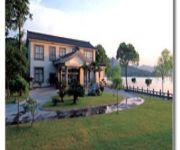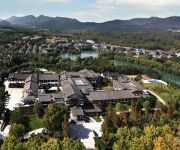Facts and Data
Webpages:
Official Unesco Page
Basis Data:
Unesco World heritage since: 2011
Size of heritage: 3,323 ha
- Buffer zone: 7,270 ha
Coordinates:
Longitude: 120,141°
Latitude: 30,238°
Summary
The West Lake Cultural Landscape of Hangzhou, comprising the West Lake and the hills surrounding its three sides, has inspired famous poets, scholars and artists since the 9th century. It comprises numerous temples, pagodas, pavilions, gardens and ornamental trees, as well as causeways and artificial islands.These additions have been made to improve the landscape west of the city of Hangzhou to the south of the Yangtze river.
Location on Map
Show bigger map on Openstreetmap
West Lake Cultural Landscape of Hangzhou
The West Lake Cultural Landscape of Hangzhou is a UNESCO World Heritage site located in Hangzhou, Zhejiang Province, China. It is a renowned cultural and natural landmark that has been recognized for its exceptional beauty and historical significance. The site covers an area of approximately 3,323 hectares and includes the West Lake, surrounding hills, and numerous temples, pagodas, and gardens.
History
The history of the West Lake Cultural Landscape dates back over 2,000 years. It has been a source of inspiration for poets, artists, and scholars throughout Chinese history. The lake and its surroundings have been shaped by human intervention, with the creation of causeways, islands, and gardens. The landscape has been carefully designed to harmonize with the natural environment, creating a unique blend of man-made and natural beauty.
During the Southern Song Dynasty (1127-1279), Hangzhou became the capital of China, and the West Lake area experienced significant development. Many temples, pagodas, and gardens were built, and the lake became a popular destination for scholars and artists. The cultural landscape reached its peak during the Ming (1368-1644) and Qing (1644-1912) dynasties when it became a favorite retreat for emperors and the literati.
Current State
The West Lake Cultural Landscape remains a cherished destination for both locals and tourists. Its outstanding universal value lies in its harmonious integration of natural and cultural elements. The lake itself is surrounded by lush hills, creating a picturesque setting that changes with the seasons. The landscape is particularly renowned for its reflections, with the lake mirroring the surrounding scenery, creating a breathtaking visual effect.
The cultural elements of the landscape include numerous temples, pagodas, and gardens. These structures showcase the architectural styles of different dynasties and reflect the cultural and religious practices of the time. Notable sites within the West Lake Cultural Landscape include the Lingyin Temple, Six Harmonies Pagoda, and the Su Causeway.
The West Lake Cultural Landscape has also been a source of inspiration for countless poets, artists, and scholars. Its beauty has been immortalized in numerous poems, paintings, and literary works throughout Chinese history. The landscape continues to inspire contemporary artists and is a popular subject for photographers and painters.
To preserve and protect the West Lake Cultural Landscape, various conservation efforts have been undertaken. These include the restoration of historical buildings, the removal of invasive species, and the implementation of sustainable tourism practices. The local government has also implemented measures to control pollution and maintain the water quality of the lake.
Overall, the West Lake Cultural Landscape of Hangzhou is a testament to the rich cultural heritage of China. Its exceptional beauty, historical significance, and harmonious integration of natural and cultural elements make it a truly remarkable UNESCO World Heritage site.
Hotels and places to stay
XIZI LAKEVIEW HOTEL
Zhejiang Xizi Hotel
Shangri-La Hangzhou
HNA Resort Huagang
LIUYING GARDEN HOTEL
YaGu Spring Resort
Hangzhou Jinxi Hotel
Edinburgh Yanggongdi Hotel - Hangzhou
Xinyu Hotel
Lvyin Hotel - Hangzhou
Videos from the area
Videos provided by Youtube are under the copyright of their owners.

















